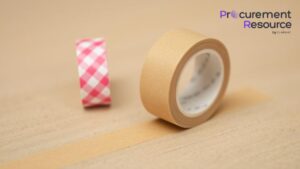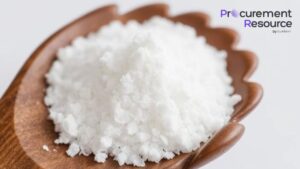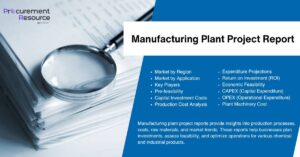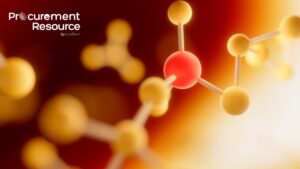- Electrical insulation in high-voltage and high-temperature environments
- Insulation in transformers, motors, and generators
- Heat shields in aerospace and automotive industries
- Heat-resistant gaskets and seals
2. Micanite Manufacturing Process
The production of micanite involves several stages, from sourcing raw mica to bonding the mica sheets with a resin binder. Each stage of the production process has an impact on the overall cost. Request For Free Sample: https://www.procurementresource.com/production-cost-report-store/micanite/request-samplea. Raw Material Sourcing
The primary raw material for micanite is natural mica, a silicate mineral that is sourced through mining. The quality and type of mica used in the production of micanite affect its performance characteristics.- Types of Mica: Muscovite and phlogopite are the two most commonly used types of mica. Muscovite is more suited for electrical insulation, while phlogopite is preferred for high-temperature applications. The cost of mica depends on the type, grade, and region of extraction.
- Mining and Extraction: Mica is primarily mined in countries like India, China, and Brazil. The cost of mining mica is influenced by labor, extraction technologies, and environmental regulations. Higher-grade mica with fewer impurities commands a higher price in the market.
b. Resin or Binder Application
Mica sheets are bonded with resins or binders to form micanite. The choice of binder affects the flexibility, strength, and thermal properties of the final product.- Types of Resins: Commonly used resins include epoxy, silicone, and phenolic resins. Each resin has different properties, such as heat resistance, electrical insulation, and flexibility, which determine the specific application of the micanite. The cost of resins varies depending on their chemical composition and suppliers.
- Application Process: The mica sheets are coated with the resin and then compressed or laminated to create the final micanite product. This process requires precise control of temperature and pressure, as well as specialized equipment.
c. Compression and Lamination
The laminated mica sheets undergo compression under high pressure to form solid, uniform sheets or tapes. The quality of the final micanite product depends on the precision of this step, which requires significant energy and labor.- Compression Machines: High-pressure compression machines are used to bind the resin and mica layers together. The cost of this equipment and its operation contributes to the overall production expense.
- Curing: After compression, the micanite must be cured to ensure the resin bonds properly. Curing requires controlled heating, which consumes energy and takes time, adding to production costs.
d. Cutting and Shaping
Once the micanite sheets are formed, they need to be cut and shaped according to the specifications of the final product. Micanite can be manufactured in different forms, including sheets, tubes, tapes, and custom shapes.- Cutting Equipment: Specialized cutting machines are required to create precision parts for specific applications, such as electrical insulation components. The cost of these machines and the associated labor must be factored into the production cost.
- Customization: In many cases, micanite products are customized to meet specific industrial requirements, such as size, thickness, and shape. Customization adds to the complexity and cost of production.
3. Factors Influencing Micanite Production Cost
Several factors impact the overall production cost of micanite, including raw materials, labor, energy consumption, and regulatory compliance.a. Raw Material Costs
The primary raw materials in micanite production are mica and resins. Fluctuations in the prices of these materials can significantly impact production costs.- Mica Prices: The cost of mica is influenced by mining conditions, supply chain logistics, and market demand. High-grade mica with fewer impurities costs more but delivers superior insulation properties. Additionally, the availability of mica in certain regions can impact costs, especially if transportation from remote mining locations is required.
- Resin Prices: The cost of resins varies based on the type of resin and market availability. Epoxy and silicone resins, for example, are more expensive than phenolic resins. Resin prices are also affected by factors such as crude oil prices and petrochemical supply chains, as many resins are derived from petroleum.
b. Energy Costs
Micanite production is an energy-intensive process, particularly during the compression and curing stages. Energy costs are a significant component of the overall production expense.- Electricity Usage: The compression of mica sheets into micanite requires high pressure and controlled heating, both of which consume large amounts of electricity. The cost of electricity varies by region, and fluctuations in energy prices can affect production costs.
- Curing Process: Curing requires controlled heat for an extended period, which adds to energy consumption. More efficient curing technologies can help reduce energy costs in the production process.
c. Labor Costs
The production of micanite involves several stages that require skilled labor, including resin application, compression, curing, and cutting.- Skilled Labor: Workers need specialized training to operate the equipment used in micanite production, particularly in the compression and cutting stages. The cost of skilled labor varies depending on geographic location and labor market conditions.
- Automation: Some manufacturers may choose to invest in automation technologies to reduce labor costs. While automation can reduce the need for manual labor, the initial investment in machinery and technology can be substantial.
d. Regulatory Compliance
The production of micanite involves the use of chemicals, including resins and adhesives, which must meet environmental and safety regulations. Compliance with these regulations can add to the cost of production.- Environmental Regulations: Manufacturers must adhere to environmental regulations regarding the handling and disposal of chemical by-products and waste materials. Meeting these requirements may involve investment in waste management systems and compliance certifications.
- Worker Safety: Ensuring worker safety in the production environment is critical, particularly when handling hazardous chemicals. Manufacturers must provide personal protective equipment (PPE) and ensure proper ventilation in the workplace, adding to production costs.
4. Cost Optimization in Micanite Production
As demand for high-performance insulating materials grows, manufacturers are continually seeking ways to reduce the production cost of micanite. Several strategies can help optimize costs.a. Material Substitution
Manufacturers may explore alternative materials or resins that offer similar performance characteristics at a lower cost.- Low-Cost Resins: Switching to less expensive resins, such as phenolic resins, can reduce material costs without compromising product quality in some applications.
- Blended Mica: Using a blend of muscovite and phlogopite mica, or lower-grade mica, can help reduce raw material costs while maintaining acceptable performance standards.
b. Energy Efficiency
Investing in energy-efficient technologies and equipment can help reduce the overall energy consumption in micanite production.- Energy-Efficient Curing: Advances in curing technology, such as the use of infrared or microwave curing, can significantly reduce the time and energy required for the process.
- Optimized Compression Systems: Modern compression systems with enhanced energy efficiency can reduce electricity usage during the lamination process.
c. Automation and Process Optimization
Automation can streamline the production process and reduce the need for manual labor, resulting in lower labor costs and increased production efficiency.- Automated Cutting and Shaping: Automated cutting systems can reduce the time and labor required to produce custom-shaped micanite products, leading to cost savings in large-scale production.
- Process Control: Advanced process control systems can optimize the temperature and pressure conditions during the production of micanite, reducing waste and improving product consistency.
Contact Us:
Company Name: Procurement Resource Contact Person: Leo Frank Email: sales@procurementresource.com Toll-Free Number: USA & Canada — Phone no: +1 307 363 1045 | UK — Phone no: +44 7537 132103 | Asia-Pacific (APAC) — Phone no: +91 1203185500 Address: 30 North Gould Street, Sheridan, WY 82801, USA Micanite, a composite material made by bonding thin layers of mica with resins or binders, is widely used in electrical insulation, heat-resistant materials, and various industrial applications. Micanite offers excellent thermal and electrical insulation properties, making it essential in industries such as electronics, aerospace, automotive, and electrical engineering. Understanding the production cost of micanite is crucial for manufacturers, suppliers, and industries that rely on it for high-performance insulation materials. In this article, we will explore the factors contributing to the micanite production cost, including raw materials, manufacturing processes, energy consumption, labor, and market dynamics.1. What is Micanite?
Micanite is a product made by compressing and bonding natural mica sheets with resins to create a flexible or rigid insulating material. There are various types of micanite based on the types of mica used (e.g., muscovite, phlogopite) and the binders or resins applied. Key uses of micanite include:- Electrical insulation in high-voltage and high-temperature environments
- Insulation in transformers, motors, and generators
- Heat shields in aerospace and automotive industries
- Heat-resistant gaskets and seals
2. Micanite Manufacturing Process
The production of micanite involves several stages, from sourcing raw mica to bonding the mica sheets with a resin binder. Each stage of the production process has an impact on the overall cost. Request For Free Sample: https://www.procurementresource.com/production-cost-report-store/micanite/request-samplea. Raw Material Sourcing
The primary raw material for micanite is natural mica, a silicate mineral that is sourced through mining. The quality and type of mica used in the production of micanite affect its performance characteristics.- Types of Mica: Muscovite and phlogopite are the two most commonly used types of mica. Muscovite is more suited for electrical insulation, while phlogopite is preferred for high-temperature applications. The cost of mica depends on the type, grade, and region of extraction.
- Mining and Extraction: Mica is primarily mined in countries like India, China, and Brazil. The cost of mining mica is influenced by labor, extraction technologies, and environmental regulations. Higher-grade mica with fewer impurities commands a higher price in the market.
b. Resin or Binder Application
Mica sheets are bonded with resins or binders to form micanite. The choice of binder affects the flexibility, strength, and thermal properties of the final product.- Types of Resins: Commonly used resins include epoxy, silicone, and phenolic resins. Each resin has different properties, such as heat resistance, electrical insulation, and flexibility, which determine the specific application of the micanite. The cost of resins varies depending on their chemical composition and suppliers.
- Application Process: The mica sheets are coated with the resin and then compressed or laminated to create the final micanite product. This process requires precise control of temperature and pressure, as well as specialized equipment.
c. Compression and Lamination
The laminated mica sheets undergo compression under high pressure to form solid, uniform sheets or tapes. The quality of the final micanite product depends on the precision of this step, which requires significant energy and labor.- Compression Machines: High-pressure compression machines are used to bind the resin and mica layers together. The cost of this equipment and its operation contributes to the overall production expense.
- Curing: After compression, the micanite must be cured to ensure the resin bonds properly. Curing requires controlled heating, which consumes energy and takes time, adding to production costs.
d. Cutting and Shaping
Once the micanite sheets are formed, they need to be cut and shaped according to the specifications of the final product. Micanite can be manufactured in different forms, including sheets, tubes, tapes, and custom shapes.- Cutting Equipment: Specialized cutting machines are required to create precision parts for specific applications, such as electrical insulation components. The cost of these machines and the associated labor must be factored into the production cost.
- Customization: In many cases, micanite products are customized to meet specific industrial requirements, such as size, thickness, and shape. Customization adds to the complexity and cost of production.
3. Factors Influencing Micanite Production Cost
Several factors impact the overall production cost of micanite, including raw materials, labor, energy consumption, and regulatory compliance.a. Raw Material Costs
The primary raw materials in micanite production are mica and resins. Fluctuations in the prices of these materials can significantly impact production costs.- Mica Prices: The cost of mica is influenced by mining conditions, supply chain logistics, and market demand. High-grade mica with fewer impurities costs more but delivers superior insulation properties. Additionally, the availability of mica in certain regions can impact costs, especially if transportation from remote mining locations is required.
- Resin Prices: The cost of resins varies based on the type of resin and market availability. Epoxy and silicone resins, for example, are more expensive than phenolic resins. Resin prices are also affected by factors such as crude oil prices and petrochemical supply chains, as many resins are derived from petroleum.
b. Energy Costs
Micanite production is an energy-intensive process, particularly during the compression and curing stages. Energy costs are a significant component of the overall production expense.- Electricity Usage: The compression of mica sheets into micanite requires high pressure and controlled heating, both of which consume large amounts of electricity. The cost of electricity varies by region, and fluctuations in energy prices can affect production costs.
- Curing Process: Curing requires controlled heat for an extended period, which adds to energy consumption. More efficient curing technologies can help reduce energy costs in the production process.
c. Labor Costs
The production of micanite involves several stages that require skilled labor, including resin application, compression, curing, and cutting.- Skilled Labor: Workers need specialized training to operate the equipment used in micanite production, particularly in the compression and cutting stages. The cost of skilled labor varies depending on geographic location and labor market conditions.
- Automation: Some manufacturers may choose to invest in automation technologies to reduce labor costs. While automation can reduce the need for manual labor, the initial investment in machinery and technology can be substantial.
d. Regulatory Compliance
The production of micanite involves the use of chemicals, including resins and adhesives, which must meet environmental and safety regulations. Compliance with these regulations can add to the cost of production.- Environmental Regulations: Manufacturers must adhere to environmental regulations regarding the handling and disposal of chemical by-products and waste materials. Meeting these requirements may involve investment in waste management systems and compliance certifications.
- Worker Safety: Ensuring worker safety in the production environment is critical, particularly when handling hazardous chemicals. Manufacturers must provide personal protective equipment (PPE) and ensure proper ventilation in the workplace, adding to production costs.
4. Cost Optimization in Micanite Production
As demand for high-performance insulating materials grows, manufacturers are continually seeking ways to reduce the production cost of micanite. Several strategies can help optimize costs.a. Material Substitution
Manufacturers may explore alternative materials or resins that offer similar performance characteristics at a lower cost.- Low-Cost Resins: Switching to less expensive resins, such as phenolic resins, can reduce material costs without compromising product quality in some applications.
- Blended Mica: Using a blend of muscovite and phlogopite mica, or lower-grade mica, can help reduce raw material costs while maintaining acceptable performance standards.
b. Energy Efficiency
Investing in energy-efficient technologies and equipment can help reduce the overall energy consumption in micanite production.- Energy-Efficient Curing: Advances in curing technology, such as the use of infrared or microwave curing, can significantly reduce the time and energy required for the process.
- Optimized Compression Systems: Modern compression systems with enhanced energy efficiency can reduce electricity usage during the lamination process.
c. Automation and Process Optimization
Automation can streamline the production process and reduce the need for manual labor, resulting in lower labor costs and increased production efficiency.- Automated Cutting and Shaping: Automated cutting systems can reduce the time and labor required to produce custom-shaped micanite products, leading to cost savings in large-scale production.
- Process Control: Advanced process control systems can optimize the temperature and pressure conditions during the production of micanite, reducing waste and improving product consistency.



